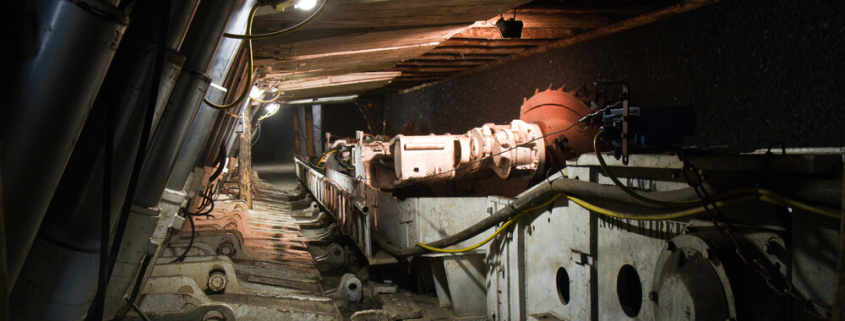Coal Mine Worker Fatality Rates are on The Rise (Updated for 2025)
There has been a disturbing number of coal mining deaths in West Virginia and throughout Appalachia during the past few years. Workers have been killed in machinery and equipment accidents, roof falls and rib rolls, explosions, slips and falls, electrical accidents, and many others. There have been multiple recent incidents of electrocutions in coal mines, which can happen when companies fail to follow proper safety protocols.
Mining in general is one of the most dangerous jobs in the world. Many things can go wrong when you work underground, and it is incumbent upon mining companies to take all measures possible to keep their workers safe. Unfortunately, many of these companies have chosen to put profits before people, and over the years, this has resulted in an untold number of senseless deaths and serious injuries among coal mine workers.
If you or a loved one has been injured or killed in a coal mining accident, call the experienced attorneys at Bailey, Javins, and Carter, L.C. for a free consultation. We have successfully represented coal miners in West Virginia since 1970. We understand the industry and the dangers involved with working in the mines, and we put our extensive experience to work to fight hard for every dollar of compensation our clients deserve.
Numbers Show Coal Worker Safety in Decline
Every year, numerous workers are killed in coal mines in the U.S. But the number of worker fatalities had been falling up until a few years ago. In 2009, for example, the total number of annual fatalities nationwide fell below 20 for the first time. And 2016 saw the lowest number of miner fatalities on record.
But coal miner deaths rose sharply in 2017, and 2018 ended tragically when three miners were killed over an 11-day period. There have been several more tragic coal mining deaths in 2019, including two just recently from electrical accidents in West Virginia mines. Many experts are starting to see a troubling trend.
The number of coal mine worker fatalities may be lower today than it was a decade or two ago, but this does not mean that the mines are any safer. There are only about one-fifth the number of mines in operation today as there were just six or seven years ago, and the number of deaths per 100,000 mining workers was actually higher in 2018 than it was in 2009.
On top of all this, an NPR investigation revealed last year that more than 2,000 individuals who have worked in coal mines throughout Appalachia have developed the most severe form of black lung disease. And sadly, these cases could have been prevented. For decades, regulators had evidence that excessive and toxic mine dust exposure could cause this condition, and they took no action to stop it.
At a time when coal companies need to do more to prevent mining deaths, the government seems to be moving in the opposite direction. For example, regulatory agencies have removed “pattern of violation” (POV) status from some mines with poor safety records, apparently giving in to the lobbying efforts of the coal industry.
Electrical Hazards in Coal Mines
Mining is one of the most hazardous industries when it comes to working with electrical power. According to the Centers for Disease Control (CDC), the electrical fatality rate in the mining industry is approximately 8 to 12 times higher than other industries in the United States.
To keep electrical workers safe underground, coal companies must follow government safety standards to the letter, and careful planning and documentation must be done at every step from start to finish. Here are some of the Mine Safety and Health Administration (MSHA) best safety practices for preventing electrical tragedies like the ones we have seen recently:
· Lock out and tag out the electrical circuit;
· Control hazardous energy to the design and arrangement of the disconnecting means;
· Properly install warning labels;
· Before performing troubleshooting, develop a plan and communicate and discuss the plan to ensure the task can be completed without creating hazardous situations;
· Ensure that employees wear properly rated and maintained electrical gloves;
· Ensure that employees have been properly task-trained for the assigned task.
Is Coal Mining Dangerous? An Update for 2025
Coal mining has historically been, and continues to be, an occupation fraught with significant dangers. While advancements in technology and safety regulations have led to improvements over time, the inherent nature of extracting coal from the earth still exposes workers to a multitude of risks. This update for 2025 will explore the persistent dangers associated with coal mining, considering both traditional hazards and emerging challenges.
Traditional Physical Hazards
Many of the long-standing dangers in coal mining persist in 2025. These are primarily physical hazards directly related to the underground or surface mining environment and the machinery involved.
Mine Collapses
One of the most catastrophic risks is mine collapse. Underground coal mines involve excavating vast networks of tunnels, and the stability of these structures is paramount. Roof falls, rib falls (collapse of the tunnel walls), and overall mine subsidence can occur due to geological instability, inadequate support systems, or the impact of blasting operations. These collapses can trap, injure, or kill miners. While modern engineering and ground support techniques like rock bolting, steel arches, and concrete linings have improved stability, the unpredictable nature of geological formations means that the risk can never be entirely eliminated.
Explosions and Fires
Coal dust is highly flammable, and the presence of methane gas, which is often released during the coal extraction process, creates a significant explosion hazard. Even a small spark can ignite a devastating explosion, causing widespread damage and fatalities. Fires within mines can also be triggered by electrical faults, friction from machinery, or spontaneous combustion of coal. These fires can produce toxic gases, deplete oxygen, and create extremely dangerous conditions for miners attempting to escape. Stringent ventilation systems and gas monitoring are crucial to mitigate these risks, but equipment malfunctions or unforeseen gas releases can still lead to tragic incidents.
Machinery Accidents
Coal mining relies heavily on heavy machinery for extraction, transportation, and processing. This equipment, including continuous miners, shuttle cars, conveyors, and draglines (in surface mining), poses significant risks of injury. Accidents involving machinery can include crushing injuries, amputations, entanglement, and being struck by moving equipment. Operator fatigue, inadequate training, and poorly maintained machinery can all contribute to these incidents. While safety interlocks, proximity detection systems, and rigorous maintenance schedules are in place, the sheer scale and power of the machinery involved mean that human error or mechanical failure can still result in serious accidents.
Respiratory Diseases
Prolonged inhalation of coal dust leads to a range of debilitating and often fatal respiratory diseases collectively known as pneumoconiosis, or “black lung.” This condition causes inflammation and scarring of the lungs, leading to shortness of breath, coughing, and eventually respiratory failure. Despite efforts to control dust levels through ventilation, water sprays, and personal protective equipment like respirators, miners continue to be at risk, especially with long-term exposure. In 2025, there is growing concern about more aggressive forms of black lung appearing in younger miners, possibly due to changes in mining practices that expose them to higher concentrations of silica dust mixed with coal dust.
Emerging and Evolving Hazards
Beyond the traditional physical dangers, the coal mining industry in 2025 faces evolving and emerging hazards related to technological advancements and changing environmental conditions.
Automation and Remote Operations
While automation and remote-controlled machinery are being introduced to improve efficiency and reduce direct human exposure to some hazards, they also bring new risks. Cybersecurity threats to automated systems could lead to malfunctions or unintended operations, potentially causing accidents. Furthermore, the maintenance and repair of these complex robotic systems introduce new types of technical hazards that require specialized training and safety protocols. The transition to more automated mining also raises concerns about the potential for job displacement and the socio-economic impacts on mining communities.
Climate Change and Extreme Weather
Climate change is increasingly impacting various industries, and coal mining is no exception. Extreme weather events, such as intense rainfall and flooding, can pose significant risks to both surface and underground mines. Flooding can inundate underground workings, trapping miners and damaging equipment. Surface mines can be vulnerable to landslides and erosion caused by heavy precipitation. More frequent and intense heat waves can also lead to heat stress and exhaustion among miners, particularly those working in hot and humid underground environments or in open-pit mines.
Mental Health and Psychological Well-being
The demanding and dangerous nature of coal mining can also take a toll on the mental health of workers. The long hours, physically strenuous work, isolation in underground environments, and the constant awareness of potential hazards can contribute to stress, anxiety, and depression. The risk of accidents and fatalities among colleagues can also lead to trauma and psychological distress. In 2025, there is a growing recognition of the importance of addressing the mental health needs of miners through support programs and access to mental health professionals.
Aging Workforce and Skills Gap
In many coal-producing regions, the workforce is aging, and there can be challenges in attracting and retaining younger workers. This can lead to a skills gap as experienced miners retire, and there may be a shortage of individuals with the necessary expertise to operate and maintain increasingly complex mining technologies. An aging workforce may also be more susceptible to certain types of injuries and health issues. Ensuring adequate training and knowledge transfer to new generations of miners is crucial for maintaining safety standards.
Despite advancements in safety practices and technology, coal mining remains a dangerous occupation in 2025. Traditional physical hazards such as mine collapses, explosions, machinery accidents, and respiratory diseases continue to pose significant risks. Furthermore, the industry faces emerging challenges related to automation, climate change, mental health, and an evolving workforce.
Continuous efforts in research, technological innovation, stricter regulations, and a strong safety culture are essential to further mitigate these dangers and protect the well-being of coal miners in the years to come. The transition towards cleaner energy sources may eventually reduce the reliance on coal mining, but for those who continue to work in the industry, ensuring their safety remains a paramount concern.
Injured in an Electrical Mining Accident? Call Bailey, Javins, and Carter L.C. for Legal Help
At Bailey, Javins, and Carter L.C., we have successfully handled cases for electrical workers who have been injured or killed in coal mines and all other types of coal mine accident cases. We are not intimidated by the coal industry and their vast resources, and we will stand by your side to provide the strong legal counsel and moral support you need during this difficult time.
Call our office today at (800) 497-0234 or (800) 296-6979 or message us online to schedule a free consultation with a member of our legal team.




